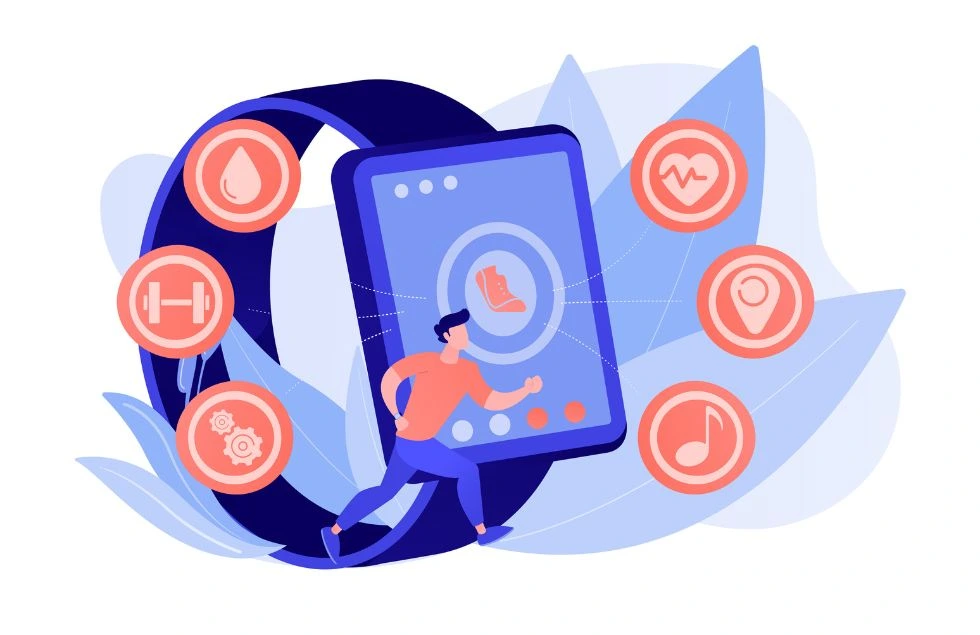“Artificial intelligence will have a more profound impact on humanity than fire, electricity and the internet.” – Sundar Pichai.
Incorporation of AI in the health and fitness sector has been a great success. From AI-powered fitness apps to smart wearable devices, technology is transforming the way we approach health and fitness. Its easy accessibility and affordability has ensured the majority of the population can take advantage of AI tools for their better wellbeing.
In this blog, we’ll explore the importance of personalization, the role of AI in wellness, and how it can guide fitness journeys. Whether you’re aiming for weight loss, muscle building, or just maintaining a balanced lifestyle.
Why Personalization is Important in the Health and Fitness Sector
Personalization in the health sector is more than just some flashy trend; it’s a necessity. A generic workout plan or diet recommendation might work for some but ultimately it does not address different body types, health conditions and personal goals. That’s where personalization makes a difference.
Every individual has different needs according to their body structure and type, and having a generic approach can often not lead to desired results. For instance:
- A generic diet plan may not consider any considerations to allergies.
- Or a generic workout plan may not consider health conditions a person might be facing.
This generic approach can be dangerous for an individual as it can cause health scare or serious injuries.
A Personalized plan will take into account your:
- Lifestyle
- Health metrics
- Fitness goals.
This holistic approach ensures that your wellness journey is tailored to your specific needs, enhancing both motivation and sustainability.
How AI Can Be Incorporated in the Wellness Sector
 Source: Freepik
Source: Freepik
Now, you might be wondering, “How exactly does AI fit into wellness?” AI is the driving force behind the personalization we just discussed. It’s incorporated into wellness in several ways, most commonly through:
- Fitness apps
- Virtual trainers
- Smart devices
Let’s dive a bit deeper into these applications.
1. AI-Powered Fitness Apps
Many fitness apps today use AI algorithms to create custom workout plans. You have to submit some personal details such as your age, weight, fitness levels, and goals. This date can be used to craft routines that fit your personal goals. These apps also adapt over time, using data collected during workouts to optimize future sessions.
2. Smart Wearable Devices
Wearable technology, like fitness trackers and smartwatches, which are widely available for the general public, are one of the best examples of AI integrations in wellness. These devices monitor real-time data such as heart rate, step count, sleep patterns, and calories burned. AI then, with the magic of science and analysis, processes all this information to provide insights and recommendations that align with your fitness goals.
3. Virtual Trainers and Wellness Platforms
AI can also be used as a virtual personal trainer and the best part? You don’t need a gym membership to consult the trainer. Platforms like Fitbods have developed these trainers that use sensors and cameras to track your movement, ensuring that you perform all your exercises in correct form. Wellness platforms that use AI can even track mental health by monitoring your sleep quality, stress levels, and activity patterns. They can analyze this data and provide you with solutions like meditation or journaling.
Benefits of AI in the Health and Fitness Sector
The introduction of AI in the health and wellness sectors has many benefits. Some of them include:
- Efficiency: As AI has a vast ocean of data, it can create routines that maximize results within a shorter time frame. For example, AI can identify which exercises are most effective based on your past performance and suggest modifications that increase efficiency.
- Accessibility: if you have a smartphone and an internet connection, you have access to AI powered apps and softwares. Wearables like smartwatches and fitness trackers are easily available on popular e-commerce platforms. This accessibility eliminates the need for gym memberships or in-person consultations, making health and fitness guidance more available and affordable.
- Motivation and Consistency: One of the biggest challenges in maintaining a fitness routine is motivation. Can you remember the number of times you started working out and left after a week or a month? AI helps address this problem by providing instant feedback and tracking progress in real-time. Seeing improvements in your health journey can keep your motivation high.
- Long-term Tracking and Adaptation: AI isn’t just about short-term results. It tracks long-term data, adapting and adjusting fitness and wellness plans as your body changes over time. This ensures that your wellness journey remains relevant and effective.
How AI Can Guide Fitness: Weight Loss and Muscle Building
muscle building; two processes which traditionally require fitness experts.
Weight Loss
AI-driven fitness apps take a comprehensive approach to weight loss. Along with providing you with a workout routine; they also monitor your calorie intake, recommend diets, and track your progress. For example, AI algorithms can study and understand your dietary habits and suggest healthier alternatives that fit your taste preferences and nutritional needs.
Muscle Building
Muscle building requires more of a structured and progressive approach. AI apps and platforms can calculate the best exercises and weights for your body type and goals, creating routines that gradually increase in difficulty. They also track your performance and offer feedback to ensure that you’re performing exercises with proper form, reducing the risk of injury.
How Wearable Devices and Health Apps Are Helping People
Wearable technology has become quite common in the fitness industry, and its integration with AI is what makes it so powerful.
- Health Monitoring: Devices like smartwatches monitor vital signs such as heart rate, blood oxygen levels, and sleep patterns. AI algorithms process this data, and provide insights like when to rest, adjust activity levels, or focus on recovery.
- Personalized Recommendations: These devices use AI to offer tailored workout and wellness recommendations based on real-time feedback. For instance, if the device detects insufficient sleep, it may suggest lighter activity the next day or recommend breathing exercises to manage stress.
- Long-term Tracking and Analysis: The ability to continuously collect and analyze data allows these devices to offer insights into long-term health trends, such as improvements in cardiovascular health or changes in sleep patterns, giving users a comprehensive view of their wellness journey.
Who Should Take Advantage of AI in Wellness?
- Busy Professionals: Those balancing work, personal life along with traveling from work to home and need flexible, efficient health and fitness solutions.
- Homemakers: Housewives, people who work from home or people who don’t have any gym or park near your house.
- Fitness Enthusiasts: People looking to optimize their workout routines with personalized guidance and real-time feedback.
Individuals Preferring Flexibility: Many individuals are not just looking for muscle building but rather a healthy lifestyle in general. Gym workouts are usually designed for muscle building. AI can help develop a routine which is a mix of strength training, cardio and yoga.
Conclusion
AI is revolutionizing the health and fitness sector by making personalized wellness more accessible and efficient. From customized workout plans to real-time feedback and monitoring, AI provides the tools needed to achieve and maintain a healthy lifestyle. As technology continues to evolve, the possibilities for personalized wellness are endless. Whether you’re a fitness enthusiast or someone just starting their wellness journey, AI offers solutions tailored just for you.
For more blogs related to health and fitness, you can check out StayFit StayHealthy

